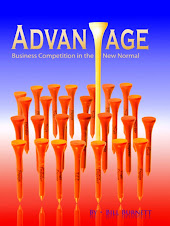Last night I attended the MIT Enterprise Forum 2008 Whiteboard Challenge. 13 finalists selected from a field of 67 applicants, presented for 5 minutes in front of a whiteboard. The first prize ($3,000) went to Dan Masterson for his product guardian angel. It is an electrical outlet which senses when your hand gets near to it using a capacitive sensing device, the same technology used in the eye phone. You can't see a demonstration of this at
http://www.emdtech.com/outlet.html.
Igor Stamenkovic won the $1500 second prize for his company’s Mag Drive. This technology utilizes computer analysis of magnetic fields to determine the optimum efficiency between fixed magnets and copper coils. The model of their motor/generator configures the fixed magnets inside a spinning core. In talking to Igor after his presentation he indicated that in the case of small windmill generators the Mag Drive motor can deliver up to 50% greater efficiency.
Third prize went to Russ Felker of
RevStor. Their product uses the existing computer infrastructure within a company to create a secure computing cloud that provides security, data back-up and management for its information.
Other interesting presentations included Rich Gorski who presented a greatly miniaturized electron beam devise useful in making photo masks of circuitry to be burned into silicone. William Thompson had an idea to rejuvenate capped oil Wells to tap their remaining natural gas with a device that converts the gas to liquid, which can be transported by truck.
Jim Eiden had the idea to grow switch grass along roadsides, which can be harvested to make ethanol. Matthew Norris presented technology that unscrambles and analyzes the sounds coming from medical devices such as a wireless stethoscope to produce medical information.
The event was very well organized by the MIT enterprise forum of Chicago sponsored by
Bell, Boyd, and Lloyd LLP of a Chicago,
RPX group, Lextech, and
Northwestern University.





